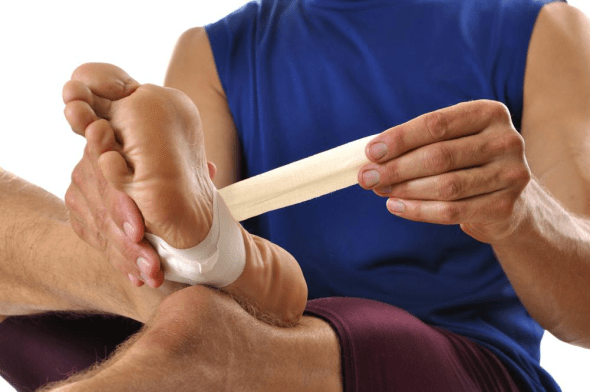Most diseases are a result of unhealthy lifestyle habits and a lack of hygiene.
But in 1908, dermatologist Arthur Whitfield of King’s College Hospital, London, described a disease that’s linked to modernity.
This disease was commonly known as the ringworm of the foot, but scientists knew it by the name Tinea Pedis.
It wasn’t until the epidemic affected the United States that this disease was commonly referred to as athlete’s foot.
As the name indicates, this disease was common among athletes, but in the 1940s, it was found among miners and soldiers too.
The term athlete’s foot was first used in 1928 in the Literary Digest.
The most surprising trait of the disease was that it usually affected the affluent classes, who adapted to the modernity of the new world.
Below we will outline everything you need to know about athlete’s foot, and all the signs that you have athlete’s foot.
The Modern World And Athlete’s Foot

People with allergies and eczema have always been at a high risk of getting athlete’s foot, but a weak immune system is also a possible cause.
People who engage in sports such as swimming and running are also susceptible to the infection.
Around 15%-25% of the population is likely to have the infection at a given time, so it’ll be fair to say that this is a common disease.
The fungal infection affects the upper layer of the skin, which is at high risk, especially when it’s moist warm and irritating.
The disease is caused by a fungus called Trichophyton, which grows well in moist conditions.
Since this fungus can also spread on the hands, you need to be aware of the symptoms of athlete’s foot.
So if you want to protect yourself from this common infection, you need to know about some common signs that you have athlete’s foot.
In order to help you gauge correctly, we have listed down some common signs for you. Read on and be enlightened!
1. Signs That You Have Athlete’s Foot – Dry & Flaky Skin

If you notice extremely dry and flaky skin on your foot, especially between your toes, it’s an early sign that you have athlete’s foot.
Your soles too can fall victim to this dry skin, so look out for this symptom.
Some people have also reported peeling and cracked skin between the toes and on the soles as possible signs of athlete’s foot.
The fungus can cause white or red patches on the skin that are not only unsightly but can also cause extreme irritation, which brings us to the second symptom.
2. Signs That You Have Athlete’s Foot – Itchy and Irritated Skin

If you seem to have extreme itchiness on your toes or soles, then you probably have athlete’s foot.
Within minutes the itching can get severe and eventually cause burning between your toes and on your soles.
Furthermore, blisters can also appear.
These signs that you have athlete’s foot will only get worse unless you seek medical attention immediately.
A majority of people also reported raw skin as a symptom of the fungal infection.
3. Signs That You Have Athlete’s Foot – Discolored Toenails

In some cases, the infection can even spread to your toenails and can cause severe discoloration.
Your toenails can become cloudy yellow, a gross orange, and may even appear slightly thicker than the rest of the toenails.
This can happen over time and you’ll find it hard to cut them with a standard nail clipper.
The Call: When Should You Visit The Doctor?

As soon as any of the signs become apparent, you need to contact your GP.
They are likely to prescribe some over the counter medications that are effective in treating the infection.
In case those don’t work, your GP might recommend a more direct approach to treatment— oral and topical antifungal medications.
Remember that prevention is better than cure.
You can take the right measures to ensure that you are safe from the fungal infection at all times.
Here are a few things you can do to ease the symptoms of athlete’s feet and get some much-needed relief.
- Change your socks regularly.
- Wash and moisturize your feet regularly.
- Keep your feet protected in public places.
- Keep your feet dry, especially the space between the toes.
- Refrain from wearing tight shoes. Instead, go for light and well-ventilated options.
Conclusion
If you have been sharing socks or wearing tight shoes for long periods of time, you are at a high risk of contracting athlete’s foot.
Your sweaty feet increase your chances of contracting this fungal infection.
The good news is that there are several home remedies to alleviate the signs that you have athlete’s foot.
The same results can be achieved with the help of prescription medication.
There are a number of sprays, topical creams and oral antifungal medication that can reduce the painful inflammation and heal the infection.
So what are you waiting for? If you’re experiencing any of the symptoms of athlete’s foot given above, you know what to do.
Seek medical help at once and while you wait for your appointment, make sure you use a few home remedies to get some relief from pain and discomfort!
Pin This Image


This account is run by a team of writers, researches, and more who simply love contributing to the site.
